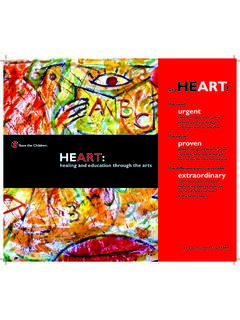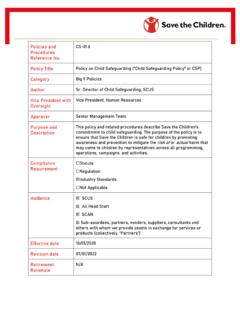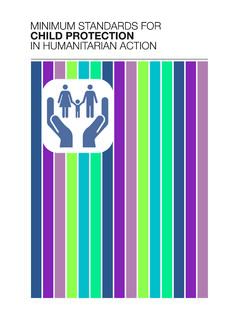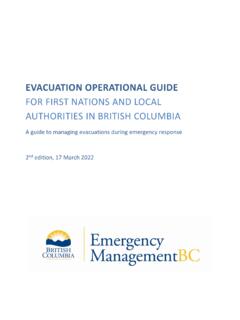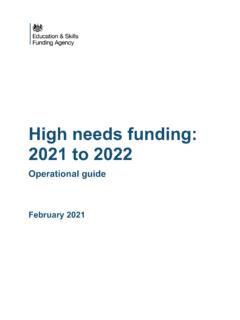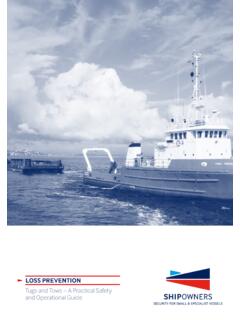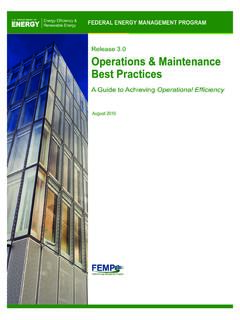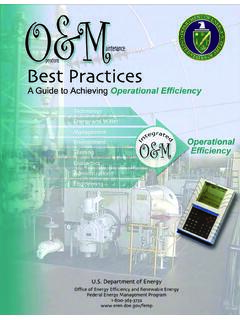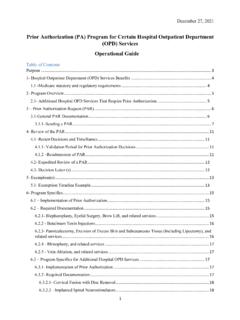Transcription of Menstrual Hygiene Management Operational Guideline
1 Menstrual HygieneManagementOperational Guidelines AcknowledgementsContact DetailsWe are grateful to all the people and organizations who contributed to the development of the Menstrual HygieneManagement (MHM) Operational Guidelines. Thank you to all our Save the Children colleagues who reviewed drafts ofthe Guidelines and shared supplementary resources for this document: Sarah Bramley, Amy Jo Dowd, Jarret Guajardo,Caroline de Hilari, Christine Jonason, Brad Kerner, Seung Lee, Natalie Roschnik, Ruth Speyer and Mohini Venkatesh. We truly appreciate our external reviewers who volunteered their time to provide feedback on various iterations of theMHM Guidelines: Sue Cavill, UNICEF; Shakil Chowdhury, Save the Children International, Bangladesh; Anna Ellis, EmoryUniversity; Sarah Fry, WASH PLUS/FHI 360; Sarah J. House, Independent Consultant; Audrey Kettaneh and Scott Pulizzi,UNESCO; Elynn Walter, WASH Advocates; and Diego Zendejas, Save the Children Mexico.
2 A special thank you toBethany Caruso, Emory University, Marni Sommer, Columbia University and Robert Dreibelbis, Oklahoma University, forsharing their MHM and research expertise, as well as providing an in-depth review of the document. We also thankSteve Sara, Save the Children, for keeping the piloting process manageable and on , this project would not have been a success without our dedicated Save the Children Country Office staff whotook on this additional project and are managing and implementing MHM pilots in their program impact areas:Bangladesh Nishat Mirza, Nasima Kama and Mostafijur Rahman; Bolivia Magaly Perez and Rosse Mary Vargas;China Jinping Guo, Nicole Li and Xiner Xu and Li Zhao; El Salvador Margarita Franco and Lisseth Monroy;Kenya Cherio Onacha and Varinia Luveg;Philippines Jonathan Valdez, Anjelia San Buenaventura,Luisa Dominguez, Melchi Uyasan and Katrina Ajes.
3 The MHM Operational Guidelines were written by Jacquelyn Haver and Jeanne L. Long, Save the effort was made possible thanks to Sponsorship Innovation Funding from Save the Children, andSave the Children Italy, as well as funding from the Long Island Council Fund. Seung Lee, Sr. Director School Health and Nutrition, Haver, Specialist School Health and Nutrition, L. Long, Specialist School Health and Nutrition, front photo cover credit: Jacquelyn HaverThe back photo credit: Lisseth MonroyAcronyms 4 Introduction to the Menstrual Hygiene Management (MHM) Operational Guidelines5 Development, Structure and Use 6 Situation Analysis 8 Appendix A: Example Oral Assent Script for Focus Group Discussions with Girls17 Appendix B: Critical Steps for an Abbreviated MHM-SHN Integration Program Cycle 18 Appendix C: Menstrual Hygiene , the Basics.
4 An Excerpt from WaterAid s Menstrual Hygiene Matters20 Appendix D:Key Questions for MHM Situation Analysis22 Appendix E: Qualitative & Quantitative Research:Why, How, Proportions, Frequency, Amounts24 Appendix F: Situation Analysis Community and School Activities25 Menstrual Hygiene Management (MHM) Program Design 27 Appendix G: Example Results Framework36 Appendix H: Example Program Activity Checklist for SHN Program Managers37 Appendix I: MHM Checklist for Intervention Assessment 38 Appendix J: Suggested Scheme for Intermittent Iron and Folic Acid Supplementation in Menstruating Women40 Appendix K: Potential Risks to Health of Poor Menstrual41 Menstrual Hygiene Management (MHM) Monitoring & Evaluation42 Appendix L: Pointers for Designing and Piloting Data Collection Tools53 Appendix M: Randomly Selecting Students for the KAP55 Appendix N: Creative MHM KAP Questions for Basic Facts56 Appendix O.
5 Visual Likert Scale options57 References 58 Table of ContentsSAVE THE CHILDREN Menstrual Hygiene Management Operational GUIDELINES4AD Adolescent developmentASRH Adolescent Sexual and Reproductive HealthCASP Common Approach to Sponsorship-funded ProgramsDM&E Design, Monitoring & EvaluationERC Ethics Review CommitteeFGD Focus Group DiscussionFRESH Focusing Resources on Effective School HealthIDI In-Depth InterviewIEC Information, Education and CommunicationIR Intermediate ResultIRB Institutional Review BoardKAP Knowledge, Attitudes and PracticesKII Key Informant InterviewM&E Monitoring & EvaluationMDG Millennium Development GoalsMEAL Monitoring, Evaluation, Accountability and LearningMHM Menstrual Hygiene ManagementMoE Ministry of EducationMoH Ministry of HealthNGO Non-Government OrganizationPTA Parent Teacher AssociationSCI Save the Children InternationalSHN School Health & NutritionSIP School Improvement PlansSMC School Management CommitteeTA Technical Assistance/AdvisorUNICEF United Nations International Children s Emergency FundWASH Water, Sanitation and HygieneWinS WASH in SchoolsWHO World Health OrganizationAcronyms SAVE THE CHILDREN Menstrual Hygiene Management Operational GUIDELINES5 There is an increase in attention on girls education by the global development community.
6 As a result, wehave seen improved retention and grade promotion for girls in many countries. With this progress, we findourselves confronting both new challenges and opportunities for girls to achieve an equitable Hygiene Management (MHM) is one among several challenges and opportunities and it is thefocus of these guidelines. Adolescence and puberty is a time of intense physical and emotional change for young people between theages of 10 and 17. Puberty marks a transition between childhood and adulthood that impacts adolescents physical, emotional and social wellbeing. Evidence shows that during puberty, adolescents embrace and solidifythe gender norms of their society. So the way girls and boys see themselves within their family, community andsociety can be drastically altered for the rest of their lives. In some contexts, puberty leads to increased social restrictions for girls and increased social freedom for adolescents, especially girls, will experience a severe drop in self-confidence during puberty.
7 All of thesefactors, and more, contribute to the increased rates of risky social and health-related behaviors that manyadolescents practice. Interventions that target younger adolescents, before these risky behaviors and norms are fully engrained, aremore effective at mitigating the behaviors and negative health and education outcomes that ensue. At thiscritical and extended juncture in their development, we have the opportunity to empower adolescent boysand girls, support girls transition into secondary school and increase girls opportunities to learn and thriveinto girls, menarche and menstruation is the physical, highly visible, and at times erratic, marker of this a result, over the past decade, MHM has gained more attention from researchers and developmentpractitioners. Formative research across the world has shown that girls in low-resource settings face manychallenges managing menstruation in school.
8 These challenges have numerous causes but can includeinadequate water and sanitation facilities at school, limited access to effective, hygienic materials for menstrualmanagement and inaccurate information about menstruation and the biology of puberty. Research-supportedrecommendations have been proposed on how to address these challenges; however, the internationaldevelopment community is lacking proven program interventions. Key MHM stakeholders have come toconsensus that a clearly defined package of evidence-based interventions is this stage of MHM evidence building and with more girls in school than ever, we know girls often lack thetangible and social-emotional support that they need during this critical transition. While we are still evaluatingMHM interventions, we know that comprehensive education and health approaches are always needed. To fullyaddress MHM in schools, practitioners should consider programming that ensures that girls and boys haveaccess to services, a safe and enabling learning environment, skills-based learning and community and policysupport.
9 This document aims to provide in-depth program guidance, using the Focusing Resources on EffectiveSchool Health (FRESH) framework and Save the Children s Common Approach to Programming, so thatschool health practitioners can incorporate MHM into their programs. While MHM is not different from other school health interventions in its requirement of careful planning andcollaboration, this topic is sensitive and sometimes stigmatized due to the link between menstruation andsexual and reproductive health. It is our responsibility to design, implement and monitor our program toIntroduction to the Menstrual HygieneManagement (MHM) Operational Guidelines respect those sensitivities, as well as reduce the social stigma of menstruation and puberty. To do this, the processoften starts by evaluating our own beliefs and biases. In fact, throughout the program cycle steps, staff may encountera stigma towards MHM.
10 There may also be teachers, parents, students and high-ranking officials with negative beliefson MHM, or simply inaccurate information. Throughout the program cycle, program staff should take care not tofurther propagate or reinforce the misinformation along the way. While this document has been written in the context of school health and nutrition, MHM can be integrated withprograms that focus on Water, Sanitation, and Hygiene (WASH) in Schools (WinS), comprehensive sexualityeducation, gender-based violence, gender empowerment and normalization and other adolescent developmentprogramming. MHM interventions should not be implemented in isolation of other programs or of other and interventions that aim to change policies and norms should be undertaken in alliance withgovernment, bilateral and Non-Government Organizations (NGO) partners. Making the effort to bring thesepartners and stakeholders in from the beginning will increase the success and sustainability of MHM interventions.
